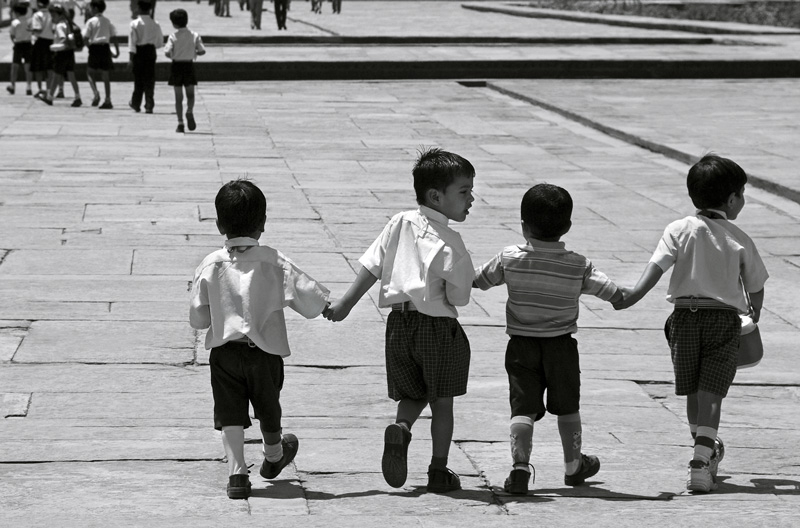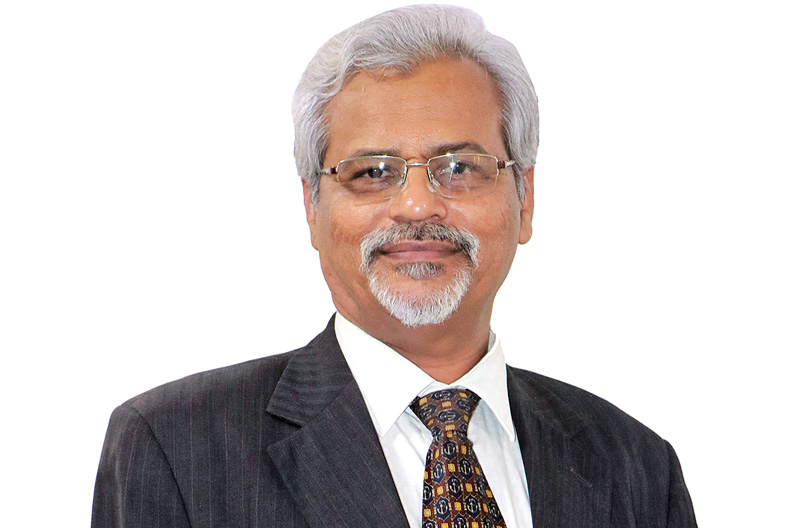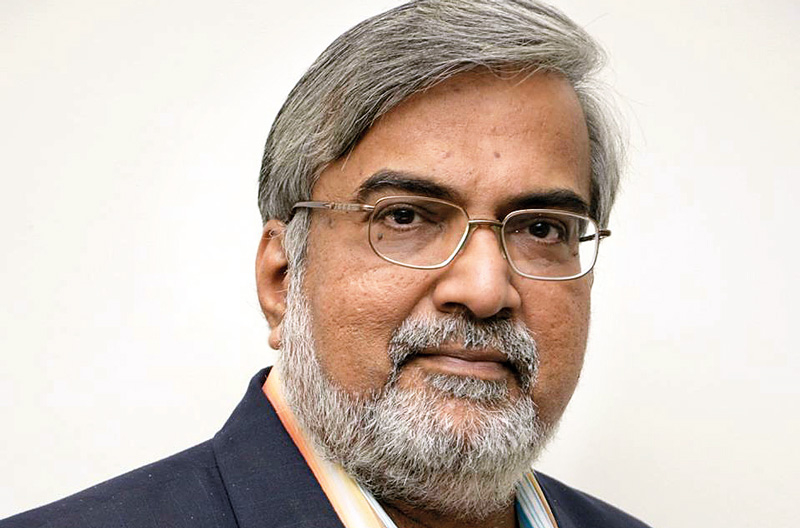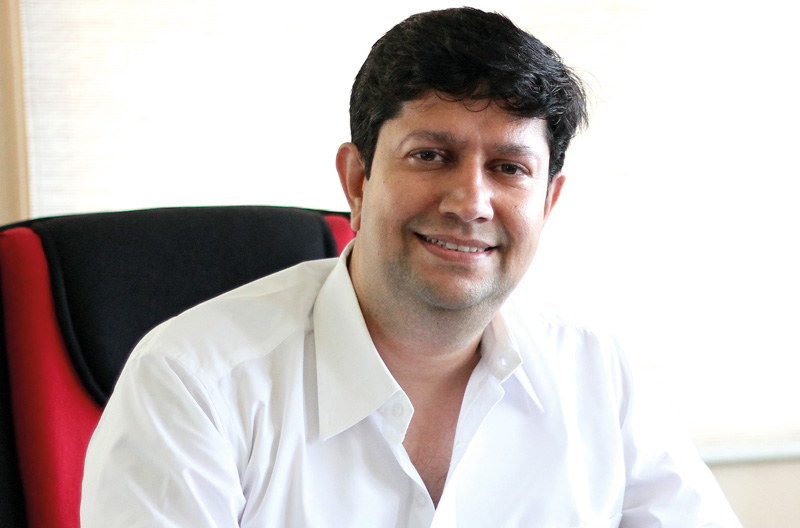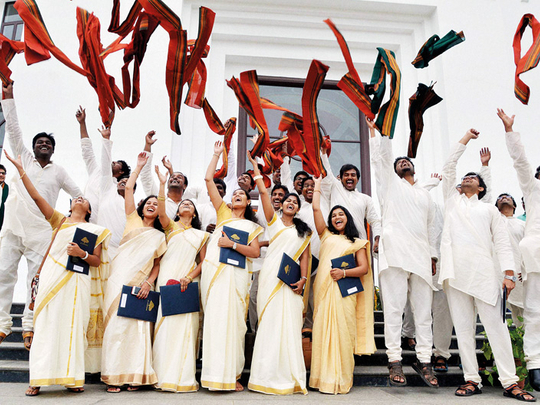
India has more than 1.5 million schools with over 260 million students enrolled, as well as about 751 universities and 35,539 colleges. The nation has one of the largest higher education systems in the world. It’s also the second biggest market for e-learning after the US, with the sector, currently pegged at $2 billion (Dh7.3 billion), expected to reach $5.7 billion by 2020.
Yet, these impressive figures don’t tell the diverse story of the evolution of this sector. To do so, one must look beyond only the past 70 years of the country’s independence. From studying the Vedas to the Gurukul system down the ages to the education system that evolved under British rule, which made the connection between education and modernisation, India’s education system has evolved from its social fabric.
In recent decades, the focus has shifted in line with trends: from studying science in the seventies, through the engineering and IT boom in the eighties and the focus on the MBA in the nineties to its current decline in demand, the sector is now at a point where it must reinvent itself to create more employable graduates. Below, we look at how India’s education sector got this far.
Boards formed
Two authorities are tasked with overseeing the nation’s schools and universities. The University Grants Commission (UGC) was created in 1945 to monitor the three central universities of Aligarh, Benaras and Delhi. In 1947, all Indian universities came under the UGC’s remit and it was tasked with suggesting improvements for the Indian university system.
In 1952, the government brought all grants to universities and higher learning institutions under the commission’s ambit. The National Council of Educational Research and Training, on the other hand, was formed in 1961 as an autonomous government body tasked with advising state and central governments on school education. Set up to design and create a common system of education that was national in character while fostering cultural diversity, its first policy, issued in 1968, formulated the 10+2 system of schooling.
Tech ed
Much of today’s technology boom can be traced to the Indian Institutes of Technology (IITs). Following the set-up of the first facility in Kharagpur, in West Bengal, in 1950, former Prime Minister Jawaharlal Nehru designated them institutes of national importance. There are 23 IITs around the country today.
“The Government of India’s strong focus on higher education with the objective of setting up centres of excellence has contributed to India’s industrial success, as well as entrepreneurial success,” explains Dr Hanif Kanjer, Director, Rustomjee Cambridge International School and Junior College, Mumbai. Google CEO Sundar Pichai is an IITian from Kharagpur.
Education for all
In 2002, the central government adopted the Sarva Shiksha Abhiyan (SSA), a landmark measure in the 86th Constitutional Amendment to make elementary education a fundamental right for children between the ages of six and 14. “Under the SSA, more than 350,000 schools were constructed by 2011 and nearly 1.12 million teachers were recruited,” says Professor Jagdish Math, Dean — RICS School of Built Environment at Amity University, Mumbai.
"The drop-out rate declined by half from 40 to nearly 20 per cent between 2001-02 and 2009-10 and the gender parity index was boosted from 0.83
to 1 and 0.77 to 0.96 in primary and upper primary levels respectively during this period,” he adds.
RTE Act
Building on the gains of the SSA, the Right of Children to Free and Compulsory Education Act or Right to Education (RTE) Act 2009 prioritised development and inclusiveness. “The RTE brought with it key features that would redefine the education system in the country, such as all private schools reserving 25 per cent of seats for the poor, minimum infrastructure criteria for all schools and professional qualification of all teachers,” says Math.
He adds that the RTE Act set a worldwide precedent by becoming the first legislation ever that placed the responsibility of ensuring enrolment, attendance and completion in the hands of the government — and not the parents.
Employment orientation
With one million people entering the Indian workforce a month, according to the labour ministry, there is increasing demand today for courses that guarantee employment. “As the job market becomes more specialised and specific skill sets are demanded by employers, vocational training or employment-oriented education is becoming more important,” says Prof. R.S.S. Mani, VP of Institutional Development, and Founding Faculty Member of the Maharashtra-based ITM Group of Institutions.
There are largely two types of institutes that provide vocational training in India: public and private industrial training centres. In addition, students now ask that higher education programmes lead to confirmed employment opportunities, and even professional courses such as engineering and management now incorporate a component of skills and digital literacy to make students more employable. “This is a disruptive change and increases the responsibility of institutions to also ensure that a career option is available after the course completion,” explains Mani.


